July 24, 2023
Transition to Urban Native Plant Pocket Prairie
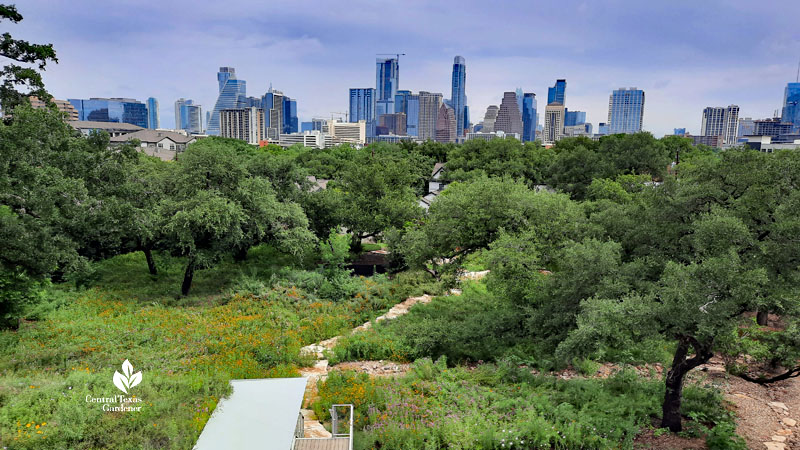
“Prairies, as it turns out, are really great at dealing with a lot of challenges that urban issues have,” environmental designer John Hart Asher told us in May at a pocket prairie just a skip away from downtown’s hustle and bustle. “Rainwater runoff, carbon sequestration, heat island mitigation, habitat.”
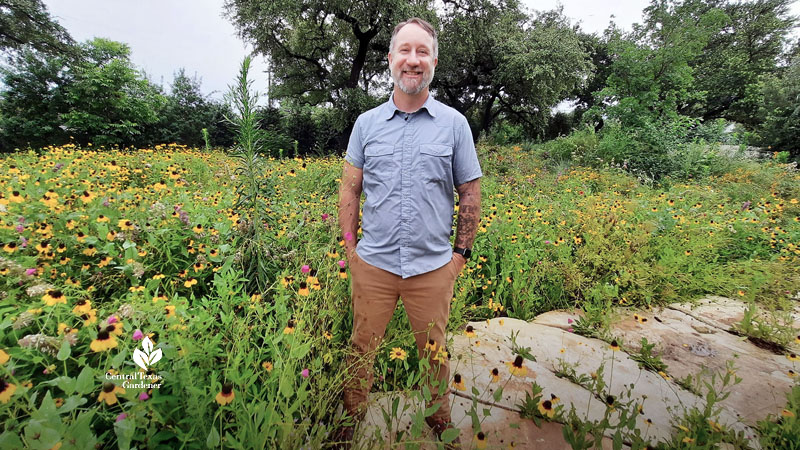
This 14,000 square foot native plant prairie is one of many ongoing restoration and conservation projects as Blackland Collaborative, co-founded in 2020 with ecologist Michelle Bertelsen and environmental designer Emily Manderson. CTG first met Emily in September 2019 when she joined John Hart in his second program as host to examine “Rethinking Landscapes in Weather Challenges.”
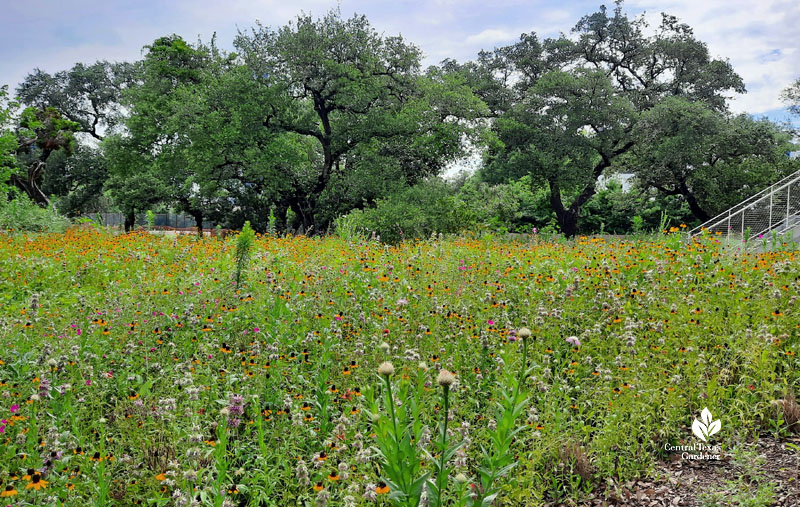
This old Austin neighborhood is mere blocks from a heat-reflecting major thoroughfare and IH-35. The property’s new homeowner asked Blackland Collaborative to establish habitat based on the historic climax community.
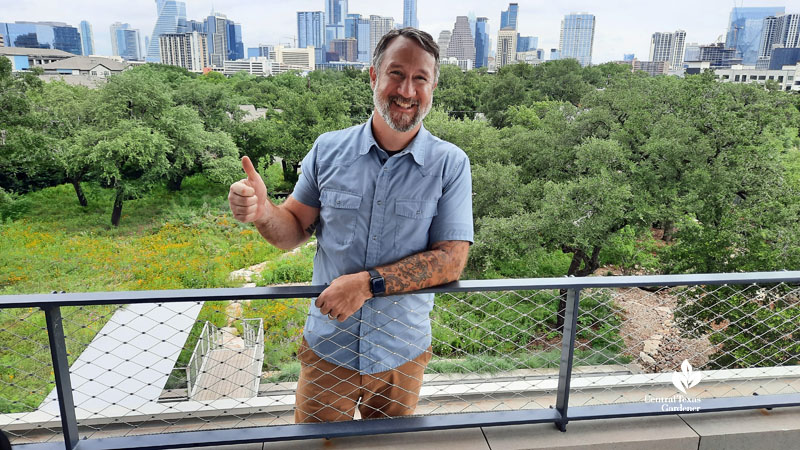
“What does that mean? Well, all of the plants, the grasses, the flowers that would have been here when we still had the bison and the wildfires coming through,” John Hart said.
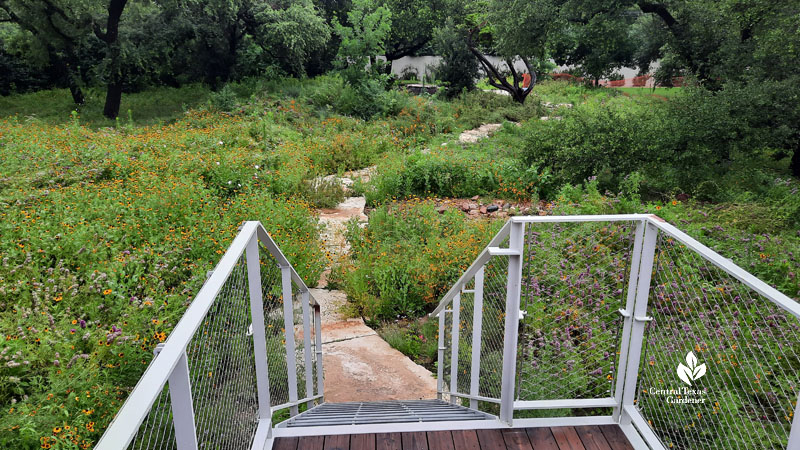
They spent a year to prepare the site—removing invasives species and amending the soil with compost and biochar (John Hart explains that in our video). In October 2022, they sowed wildflower seeds and planted native grasses.
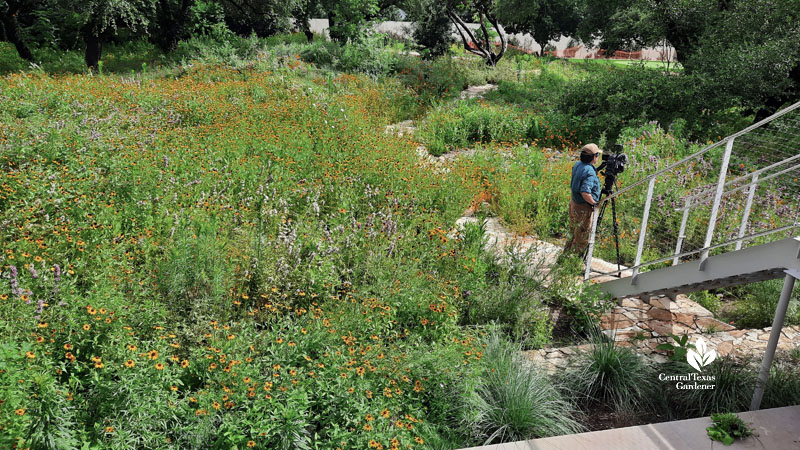
Thanks to generous spring rains, the glorious transformation restored pollinators eager to visit clasping coneflower, bee balm, and other late spring annuals. Director Ed Fuentes (and grip Steve Maedl) were as awed as I was.
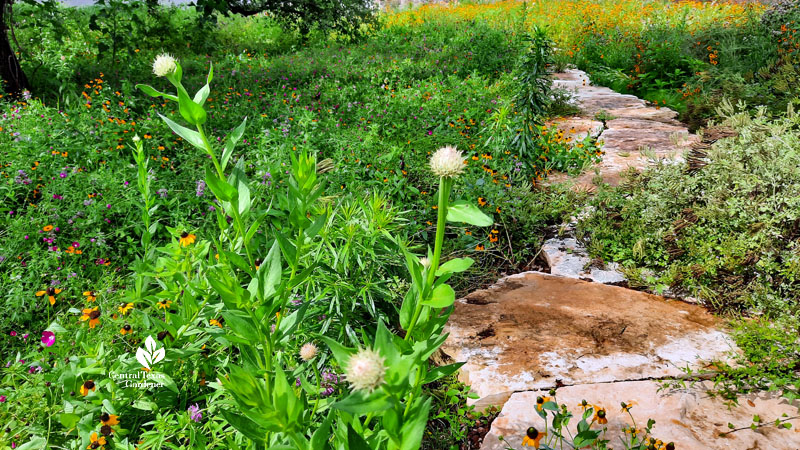 American basket flower was coming into its own in May.
American basket flower was coming into its own in May.
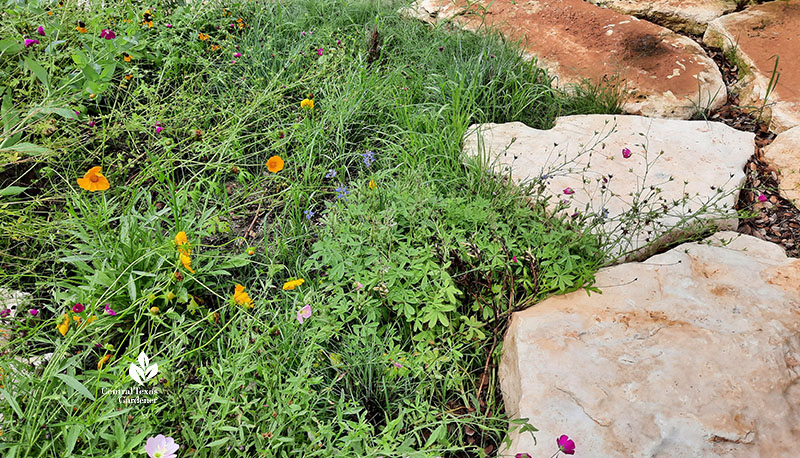
We saw plains coreopsis and winecup along with bluebonnets and pink evening primrose setting seeds.
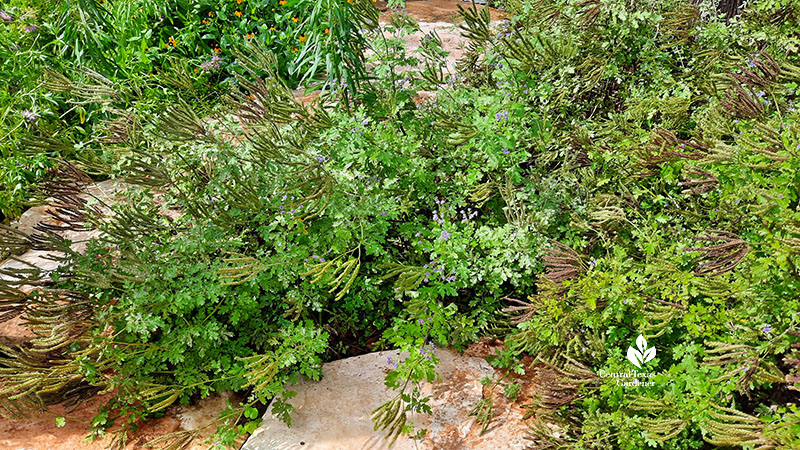
Blue curls (Phacelia congesta) joined the seed-setters to populate the future.
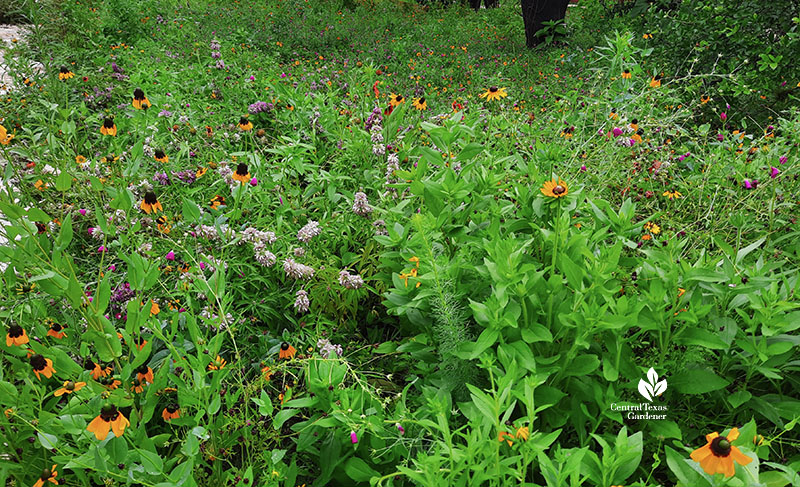
On our visit, standing cypress rosettes promised spikes of red tubular flowers for hummingbirds. And John Hart hopes to see liatris blooming in fall. “But again, this a brand-new prairie, so we’ll see what she gives us,” he noted.
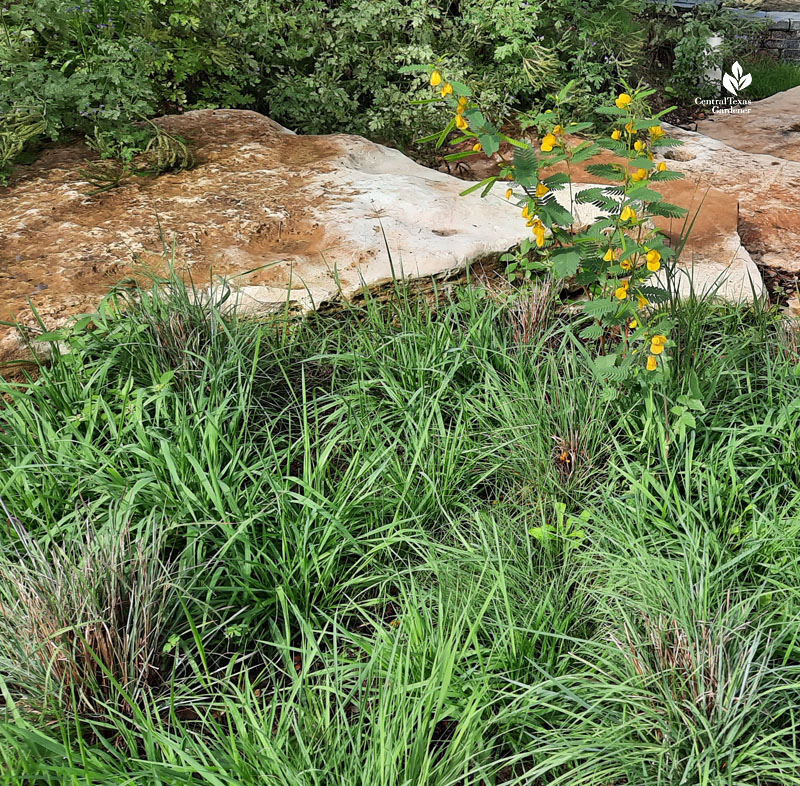
Annual partridge pea popped up against wild rye. “But this prairie was designed so that we have succession that will occur and that will slowly start to morph more towards grass dominance and perennials. So, while all those guys and gals are in here right now, you can’t see them,” he said.
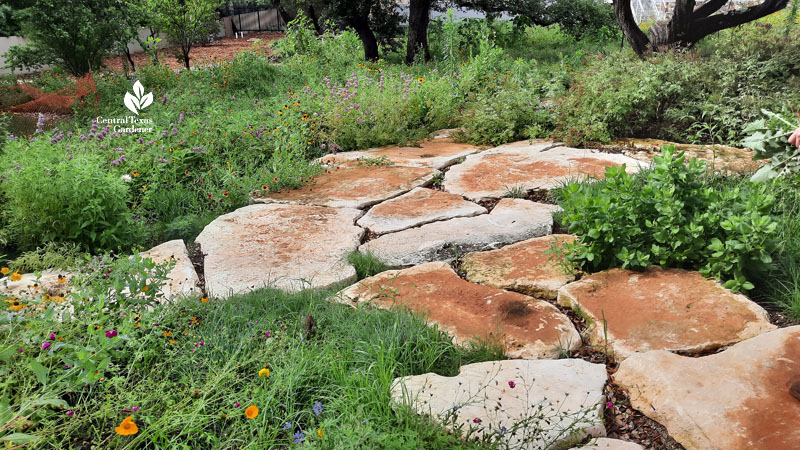
“When we start prairies, we’re talking about trajectories, not interventions. Let us practice what I like to call the art of becoming,” he reminded us.
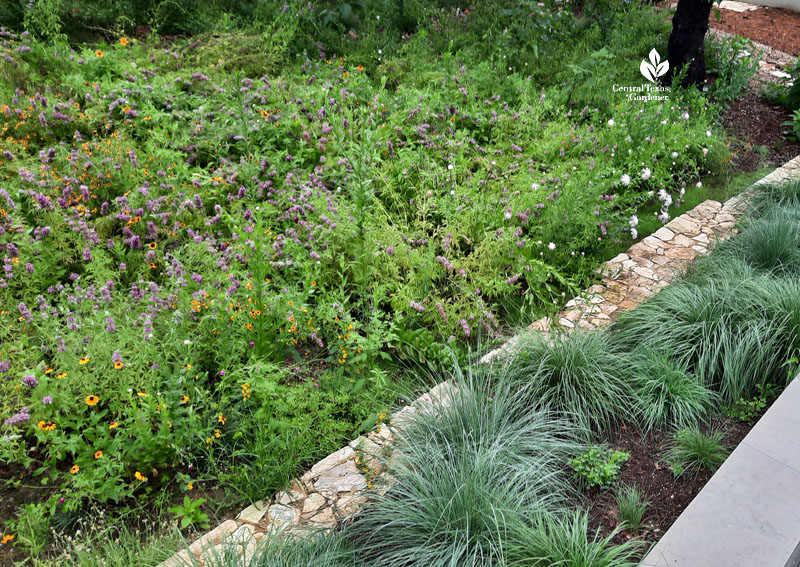
To formalize a stone raised bed along the patio’s wall, they planted big muhly (Lindheimer muhly), guaranteed to steal the glory in this fall’s flowering.
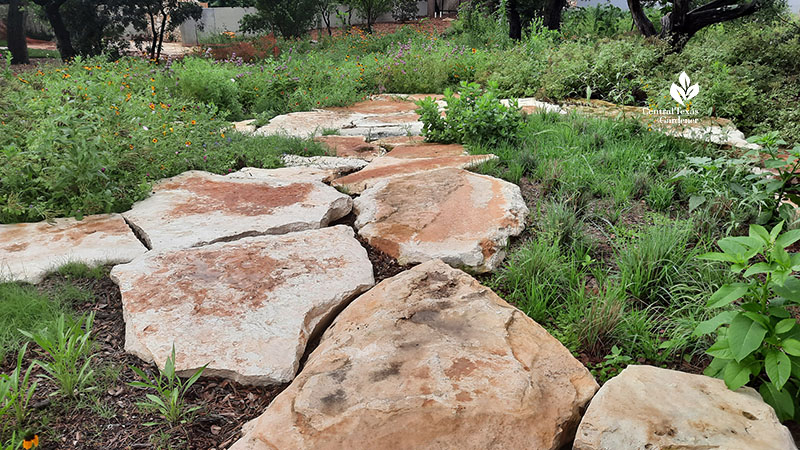
Prairies are grass-dominated systems. This first spring, though, prairie-planted grasses are a bit slower to establish since they faced light competition from robust wildflowers.
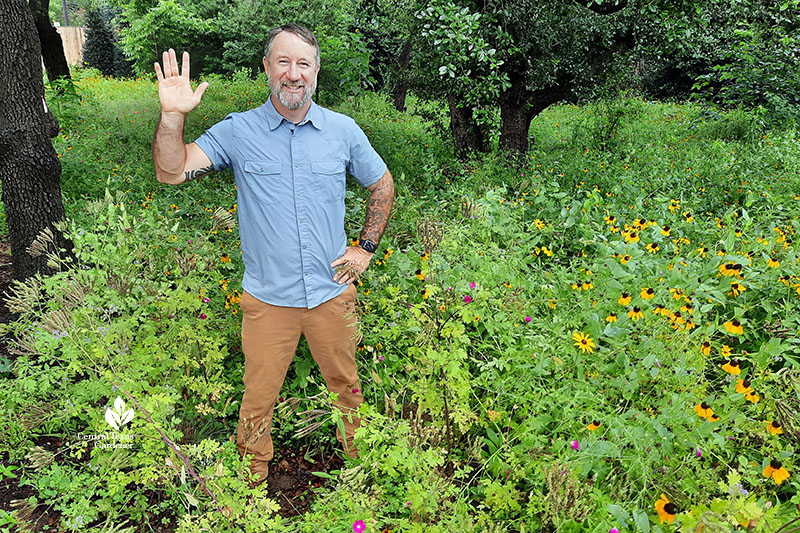
They installed 300 one-gallon native little bluestem grass. In CTG’s video, he explained why they started with transplants with this species and how to plant in sun and shade.
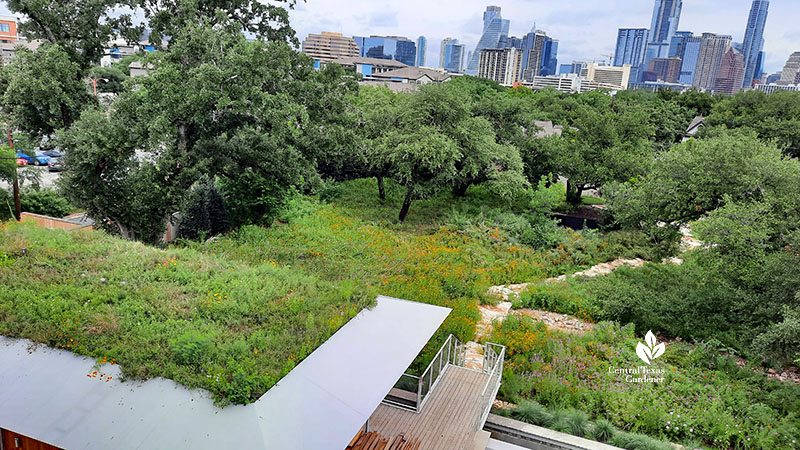
Blackland Collaborative’s first project at this site was a green roof started in late 2021. This 800-square-feet mini-prairie tops a new-construction pool house.
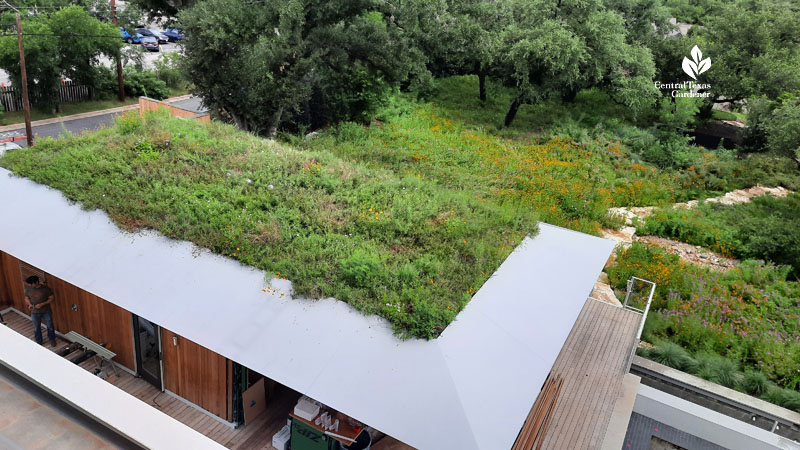
In six to 12 inches of growing media, they planted over 35 species of grasses and wildflowers, now getting fully established. We didn’t get into details, since green roof designs are not DIY projects over an existing structure, but we’ve featured them before and will do so again!
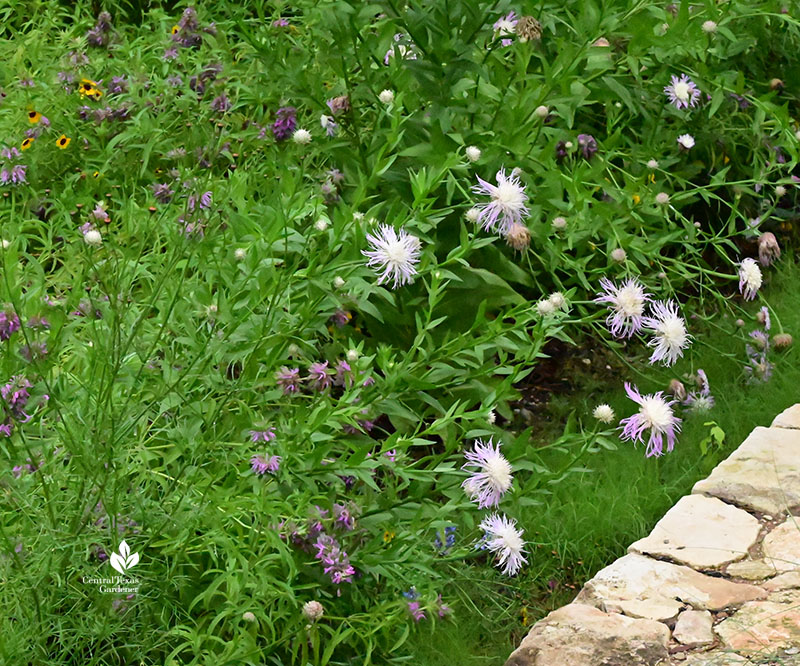
But we can all do something in our yards to extend Doug Tallamy’s Homegrown National Park interactive project. See how you can get involved!
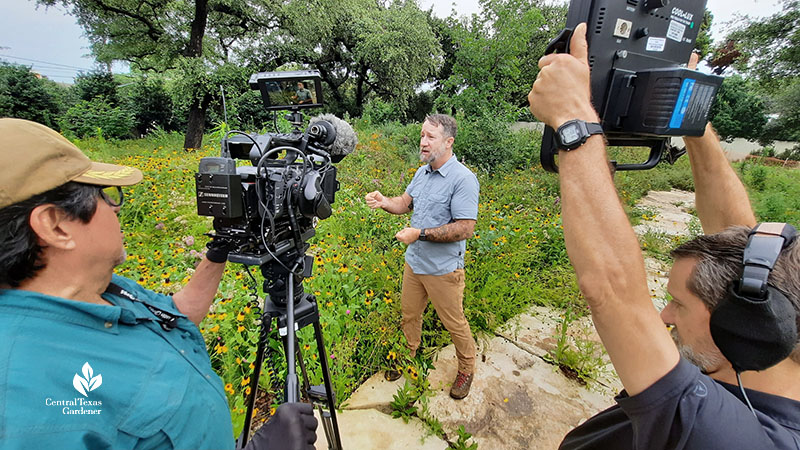
On our visit to this in-town habitat, we counted at least 17 construction cranes at hard work. Whatever we can do makes a difference, and as John Hart noted, “It is a continual dynamic, dynamic process that really rewards us.”
Two seed sources for you
Native American Seed (based in Texas)
Prairie Moon (they also sell plugs, including native milkweed)
Watch the full story!
Thanks for stopping by! Next week: a preview of the new CTG set!
Linda
tags:

